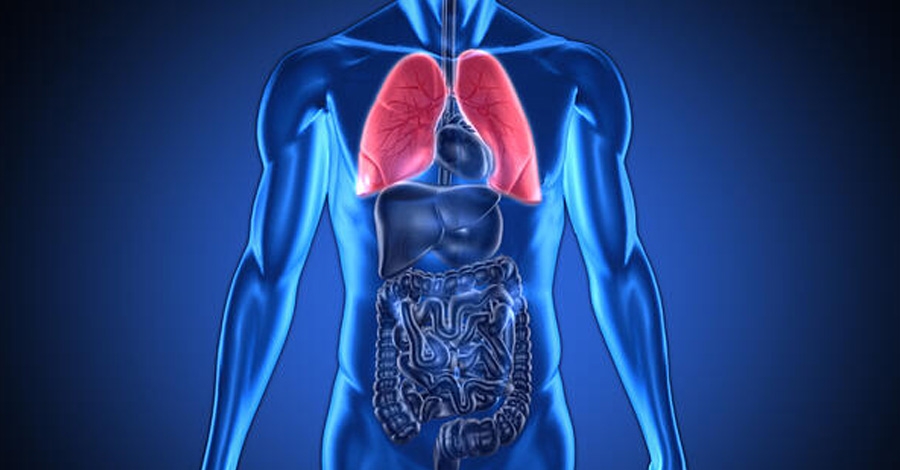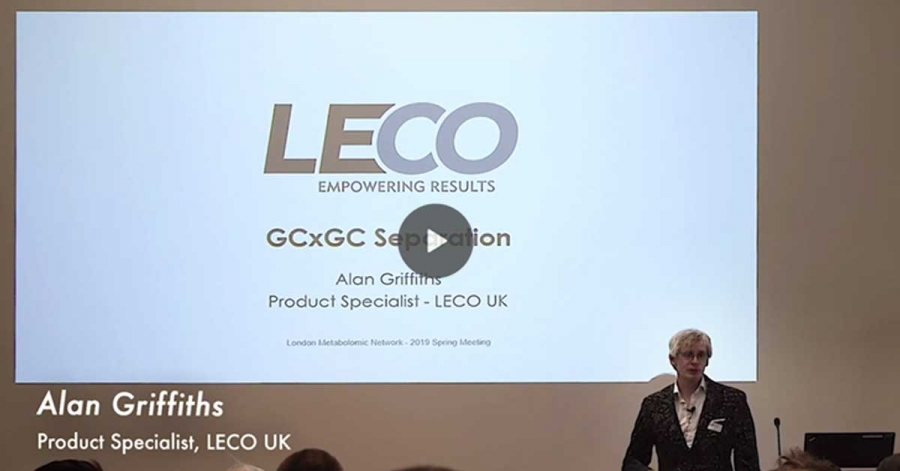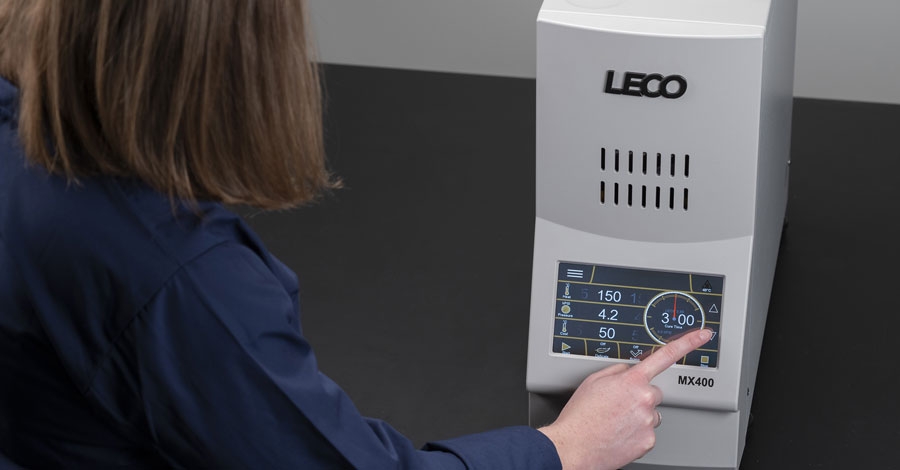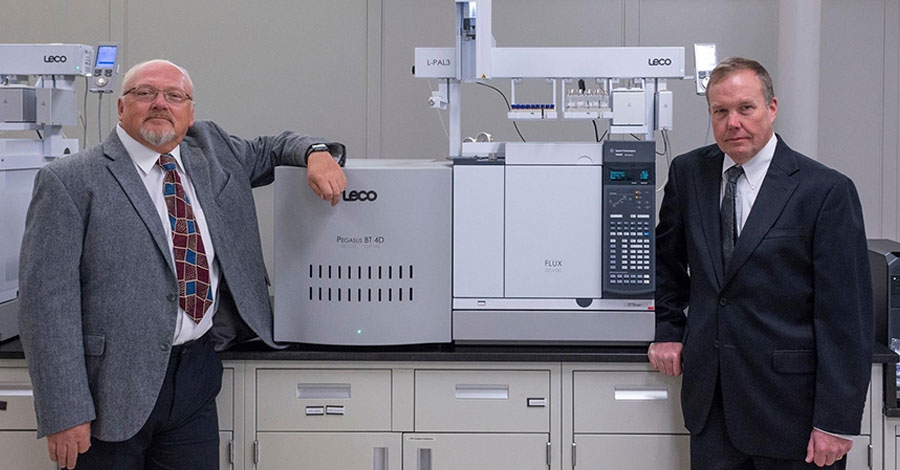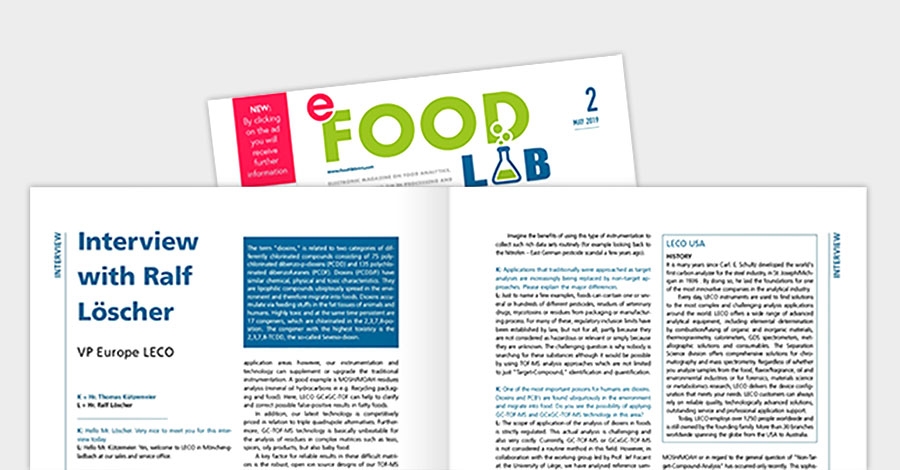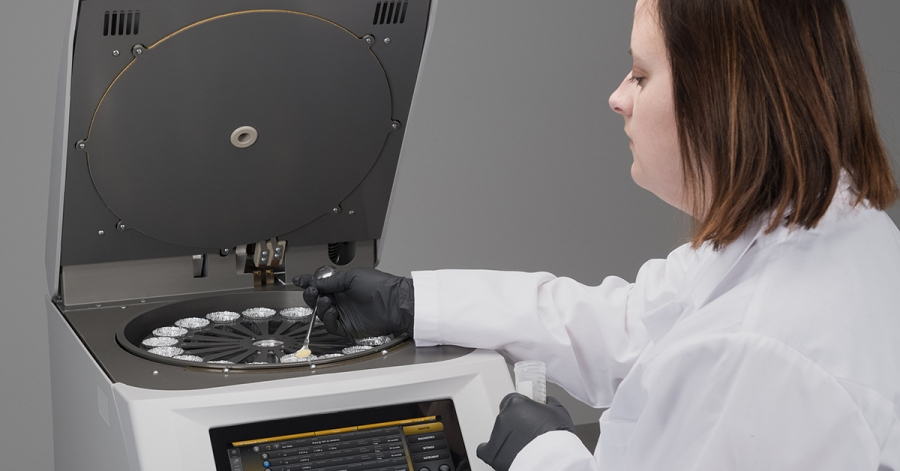
 LECO
Empowering Results
LECO
Empowering Results
At our ASMS breakfast seminars, Jean-François (Jef) Focant, Head of the Department of Chemistry and Director of the Organic and Biological Analytical Chemistry group at the University of Liège, Belgium, spoke about using our Pegasus® BT 4D and Pegasus® GC-HRT 4D for GC×GC-TOFMS on the breath of asthma patients to improve asthma treatment*. Before diving into the blood and sputum, Jef first educated us on the importance of optimizing your data.
Meeting of the London Metabolomics Network and South East Region Analytical Division of the Royal Society of Chemistry at Burlington House, London
Alan Griffiths speaks about the top of the range technique for GC×GC Separation provided by LECO. The video has been recorded at the meeting of the London Metabolomics Network and South East Region Analytical Division of the Royal Society of Chemistry at Burlington House, London. The video will be uploaded to SepScience.com for our recent PEGASUS® campaign.
Fireworks are a staple of America’s Independence Day celebrations. It is estimated that 16,000 fireworks displays are held in the United States each year and American consumers will spend more than $1 billion in firework sales to mark the holiday! Beyond a big bang and bright lights, how do these fireworks affect the environmental world around them? LECO’s world headquarters are located in Saint Joseph, Michigan, a beach town on Lake Michigan where fireworks are a prominent backdrop to the 4th of July celebration. Last summer, our applications lab thought it would be a worthwhile and interesting experiment to test the water surrounding the firework launch spot to explore if there were any short-term environmental impacts. The influx of tourists to the Lake Michigan beaches during the holiday is sure to contribute chemicals from personal care products (sunscreen and insect repellent) to the water as well. Evaluating these potential contaminants surrounding the July 4th holiday was the objective of this study.
The analysis was conducted by taking water samples from three different places along the shoreline; the fireworks launch location off the pier, as well as two local beaches close to the launch site. This was done on July 2nd as well as on July 4th (an hour after the fireworks show) to provide an accurate measurement. LECO’s Pegasus HRT+ 4D system was used to analyse the water samples, which offers comprehensive two-dimensional gas chromatography coupled to high-resolution time-of-flight mass spectrometry (GC×GC-HRTOFMS). GC×GC-HRTOFMS proved a powerful tool for exploration as it provided a full non-targeted analysis of the water samples before and after the fireworks show, clearly demonstrating the chemical differences between the two. GC×GC-HRTOFMS was also able to pinpoint contributions to the environmental pollution that occurred as a result of these pyrotechnic displays and the increased human traffic near the water sampling sites.
So what happened to the water quality of Lake Michigan from the increased tourism and fireworks? The results may surprise you…
As the newest mounting press to enter LECO’s lineup of metallographic instrumentation, the MX400 will streamline sample preparation with its exceptional ease-of-use and dual mount capability in a fully automated solution.
The MX400’s slim 8-inch design will save the user valuable counter space in their lab. The simple steel closure design is durable and safe, allowing for easy, one-handed operation. This unique construction, along with a new mold design with low thermal mass, provides energy efficient heating and substantially faster cooling than previous generations of mounting presses. There is also a convenient standby option with selectable temperature to keep the mold cylinder warm between uses, allowing for increased throughput. An optional ventilation system also helps to keep the user’s work area clean and safe from harmful fumes.
A 7-inch touchscreen interface with simple swipe-and-touch operation makes the MX400 easy-to-use. The user can easily select all parameters like heat, pressure, and cure time for unparalleled versatility. These parameters can then be used to create customizable methods for optimized repeatability. LECO developed methods are also available to get the user started. The MX400 offers three fixed common mold sizes enabling the user to choose the one that best fits their needs; a 1.25 inch, 1.50 inch, and 30 millimeters. The MX400 is ideal in sample preparation for a wide range of applications, including, but not limited to: metal such as steel, iron, and nickel; heat treatment or coatings; and most manufacturing quality control and research and developmental needs.
Non-targeted analysis, data science and innovation have synchronised to underpin the next generation of separation science analysis in mass spectrometry. LECO UK’s separations science product specialist Alan Griffiths explains.
“Ideas often spark one another, and chain reactions occur. As with chemical reactions, ideas can remain contained in relatively small areas before gradually spreading outward. California’s Silicon Valley is a focal point for technology. For mass spectrometry (MS), the UK’s city of Manchester is a focal point. Manchester is where the first commercial mass spectrometer built outside of the US was produced…“
Chemistry World // Issue 12/2019 // Article by Alan Griffiths
Ralf Löscher speaks about the latest technologies, as well as many years experience LECO has in the field of TOFMS instrumentation. The special focus of this interview refers to the food industry and the special benefits LECO offers to this market.
“In the field of chromatographic separation science technology, LECO offers GC coupled to time-of-flight (TOF) mass spectrometry (MS). This includes one-dimensional as well as two-dimensional chromatography (GC×GC), which increases chromatographic resolution and sensitivity. In addition, our latest technology is competitively priced in relation to triple quadrupole alternatives. Furthermore, GC-TOF-MS technology is basically unbeatable for the analysis of residues in complex matrices such as teas, spices, oily products, but also baby food.“
eFoodLab // Issue 02/2019 // Interview with Ralf Löscher
Jolanda Nortjé, Laboratory Manager of The Southern African Grain Laboratory (SAGL), had a problem. Working with grains meant a lot of thermogravimetric analyses, but standard oven drying methods were incredibly time-consuming. Depending on the flour matrix, oven times could range from 1 hour to 17. Whole grains could take a full 72 hours. When LECO Africa reached out with a suggestion of a better way, Nortjé was happy to give it a try. She agreed to participate in a comparison of a primarymoisture loss-on-drying determination using the TGM800 and standard oven drying methods.
